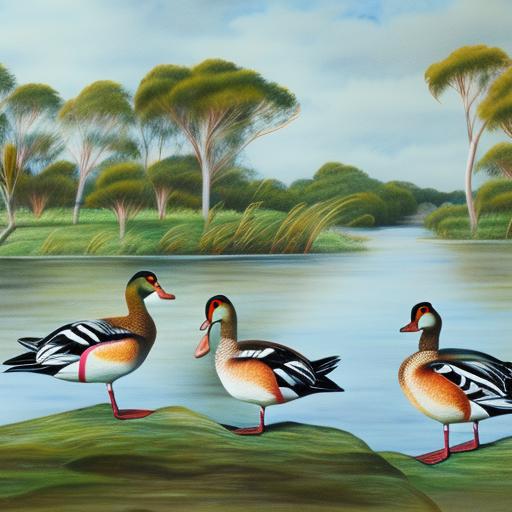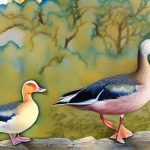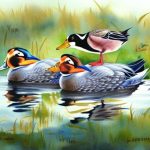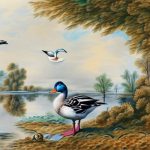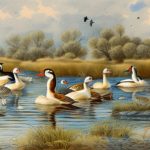Australia is home to a variety of unique and beautiful duck breeds that have adapted to the diverse landscapes and climates of the continent. These duck breeds are not only prized for their stunning appearances but also for their resilience and adaptability. From the iconic Mallard Duck to the lesser-known Australian Spotted Duck, each breed has its own distinct characteristics and traits that make them a valuable part of Australia’s natural heritage. In this article, we will explore some of the most notable Australian duck breeds, their origins, physical characteristics, and their roles in the ecosystem.
Key Takeaways
- Australian duck breeds are diverse and unique, with several distinct species found in the country.
- The Mallard Duck is a common and widespread species in Australia, known for its colorful plumage and adaptability.
- The Australian Spotted Duck is a rare and endangered species, with distinct spotted markings and a need for conservation efforts.
- The Australian Wood Duck is a popular and widespread species, known for its distinctive call and preference for wooded habitats.
- The Pacific Black Duck is a familiar sight in Australia, with its dark plumage and widespread distribution across the country.
- The Australian Shelduck is a striking and distinctive species, known for its bold coloration and preference for coastal habitats.
- Australian duck breeds offer a fascinating glimpse into the country’s diverse avian population, and further resources can be found for those interested in learning more about these unique species.
The Mallard Duck
The Mallard Duck is perhaps the most well-known and widely distributed duck species in the world, and it is also found in Australia. The male Mallard is easily recognizable by its vibrant green head, white neck ring, and chestnut-brown chest. The female Mallard, on the other hand, has a mottled brown plumage that provides excellent camouflage in their natural habitat. Mallards are highly adaptable and can be found in a wide range of habitats, from urban parks to remote wetlands. They are also known for their distinctive quacking calls and their impressive flying abilities.
In Australia, Mallard Ducks can be found in various regions, including coastal wetlands, rivers, and lakes. They are often seen foraging for food in shallow water or grazing on land. Mallards are omnivorous and will eat a wide variety of foods, including aquatic plants, insects, small fish, and grains. They play an important role in the ecosystem by controlling insect populations and dispersing seeds. However, Mallards can also have negative impacts on native species through competition for resources and hybridization with other duck species. Despite these challenges, the Mallard Duck remains a beloved and iconic part of Australia’s avian fauna.
The Australian Spotted Duck
The Australian Spotted Duck is a unique and striking duck breed that is native to Australia. As its name suggests, this duck is characterized by its distinctive spotted plumage, which consists of black and white markings. The male and female Spotted Ducks have similar appearances, with both displaying the eye-catching spotted pattern on their feathers. In addition to their striking appearance, Australian Spotted Ducks are known for their shy and elusive nature, making them a rare sight for birdwatchers and nature enthusiasts.
These ducks are typically found in freshwater habitats such as swamps, marshes, and rivers, where they feed on aquatic plants, insects, and small invertebrates. They are skilled swimmers and divers, using their webbed feet to propel themselves through the water in search of food. Australian Spotted Ducks are also known for their distinctive calls, which can range from soft quacks to high-pitched whistles. While they may not be as well-known as other duck breeds, the Australian Spotted Duck is an important part of Australia’s biodiversity and plays a crucial role in maintaining the health of wetland ecosystems.
The Australian Wood Duck
The Australian Wood Duck, also known as the Maned Duck, is a stunning and distinctive duck breed that is native to Australia. This species is easily recognizable by its striking black and white plumage, with a distinctive dark brown mane that extends from the back of the head to the nape of the neck. The male and female Wood Ducks have similar appearances, with both displaying the same striking coloration and markings. These ducks are often found in open woodlands, grasslands, and wetlands, where they forage for food and nest in tree hollows or on the ground.
Australian Wood Ducks are primarily herbivorous, feeding on a diet of grasses, seeds, and aquatic plants. They are also known to consume insects and small invertebrates when available. These ducks are highly social and form large flocks during the non-breeding season, often congregating in wetland areas where food is abundant. Australian Wood Ducks are also known for their distinctive whistling calls, which can be heard echoing through their natural habitats. Despite facing threats such as habitat loss and hunting pressure, these ducks have managed to adapt to human-altered landscapes and continue to thrive in various parts of Australia.
The Pacific Black Duck
The Pacific Black Duck is a widespread and adaptable duck breed that is found throughout Australia and the Pacific region. This species is characterized by its dark plumage, with males displaying a glossy greenish-black head and neck, while females have a mottled brown appearance. Pacific Black Ducks are highly adaptable and can be found in a wide range of habitats, including rivers, lakes, estuaries, and coastal wetlands. They are skilled swimmers and divers, using their webbed feet to propel themselves through the water in search of food.
These ducks are omnivorous and will consume a variety of foods, including aquatic plants, insects, small fish, and grains. They play an important role in the ecosystem by controlling insect populations and dispersing seeds. Pacific Black Ducks are also known for their distinctive quacking calls, which can be heard echoing across wetland areas. Despite their adaptability and resilience, Pacific Black Ducks face threats such as habitat loss, pollution, and hunting pressure. Conservation efforts are underway to protect these ducks and ensure their continued survival in Australia’s diverse landscapes.
The Australian Shelduck
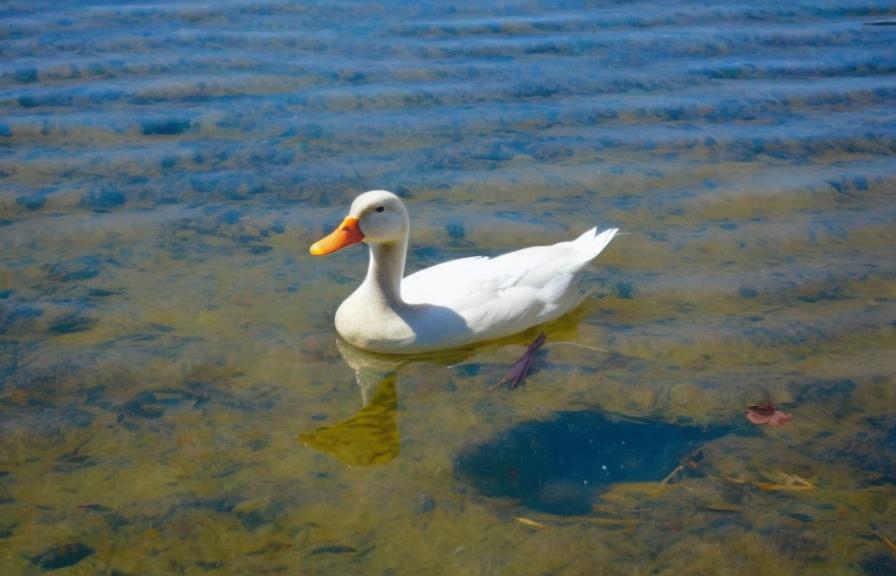
The Australian Shelduck is a striking and distinctive duck breed that is native to Australia. This species is easily recognizable by its bold black and white plumage, with males displaying a glossy greenish-black head and neck, while females have a mottled brown appearance. Australian Shelducks are often found in open grasslands, wetlands, and coastal areas where they forage for food and nest in tree hollows or on the ground.
These ducks are primarily herbivorous, feeding on a diet of grasses, seeds, and aquatic plants. They are also known to consume insects and small invertebrates when available. Australian Shelducks are highly social and form large flocks during the non-breeding season, often congregating in wetland areas where food is abundant. They are skilled swimmers and divers, using their webbed feet to propel themselves through the water in search of food. Australian Shelducks are also known for their distinctive calls, which can range from soft quacks to high-pitched whistles. Despite facing threats such as habitat loss and hunting pressure, these ducks have managed to adapt to human-altered landscapes and continue to thrive in various parts of Australia.
Conclusion and Further Resources
In conclusion, Australian duck breeds are an important part of the country’s natural heritage, with each breed playing a unique role in maintaining the health of ecosystems across the continent. From the iconic Mallard Duck to the lesser-known Australian Spotted Duck, these birds have adapted to a wide range of habitats and continue to thrive despite facing various threats. Conservation efforts are crucial to protecting these duck breeds and ensuring their continued survival for future generations to enjoy.
For further information on Australian duck breeds and conservation efforts, interested individuals can refer to resources such as birdwatching guides, wildlife conservation organizations, and government wildlife agencies. These resources provide valuable information on the identification, behavior, habitat requirements, and conservation status of Australian duck breeds. Additionally, birdwatching tours and wildlife sanctuaries offer opportunities for people to observe these beautiful birds in their natural habitats while learning about the importance of protecting them for future generations. By raising awareness about the significance of Australian duck breeds and supporting conservation initiatives, we can contribute to the preservation of these remarkable birds for years to come.
If you’re interested in Australian duck breeds, you might also want to learn about the incubation period for goose eggs. Understanding the process of hatching and caring for geese can provide valuable insights into poultry breeding. Check out this informative article on the incubation period for goose eggs to expand your knowledge of poultry breeding practices.
FAQs
What are some common Australian duck breeds?
Some common Australian duck breeds include the Australian Spotted, Australian Wood, and Australian Call ducks.
What do Australian duck breeds look like?
Australian duck breeds come in a variety of colors and patterns. They can have spotted, mottled, or solid colored feathers, and may have unique markings on their bills and legs.
Are Australian duck breeds good for backyard farming?
Yes, Australian duck breeds are often kept for backyard farming due to their hardy nature, good egg production, and ability to forage for food.
Do Australian duck breeds require special care?
Australian duck breeds require access to water for swimming and foraging, as well as shelter from predators and extreme weather. They also need a balanced diet and regular veterinary care.
Can Australian duck breeds be kept as pets?
Yes, Australian duck breeds can be kept as pets. They are known for their friendly and sociable nature, and can make great additions to a backyard or small farm.
Meet Walter, the feathered-friend fanatic of Florida! Nestled in the sunshine state, Walter struts through life with his feathered companions, clucking his way to happiness. With a coop that’s fancier than a five-star hotel, he’s the Don Juan of the chicken world. When he’s not teaching his hens to do the cha-cha, you’ll find him in a heated debate with his prized rooster, Sir Clucks-a-Lot. Walter’s poultry passion is no yolk; he’s the sunny-side-up guy you never knew you needed in your flock of friends!

